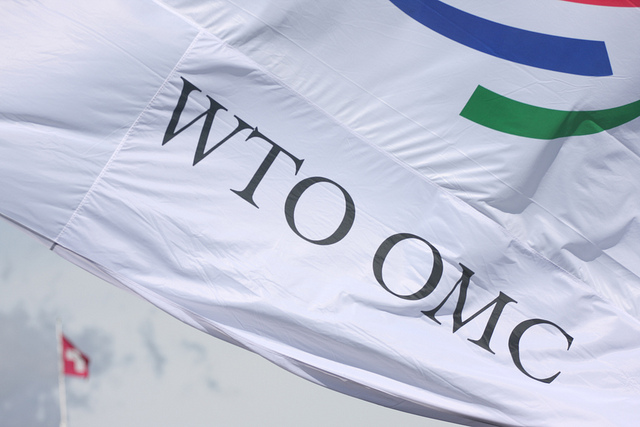State aid rules play an important role in the management of the single market. State aid is defined as any advantage granted by public authorities through state resources on a selective basis to any organisations that could potentially distort competition and trade in the EU. Unless otherwise permitted, State aid is viewed as incompatible with the single market and is prohibited. However, the Treaty leaves room for the granting of State aid in respect of several policy objectives, considering the possibility of market failures and the need for a well-functioning and equitable economy. For example, of relevance to the agricultural sector and forestry, the Treaty considers aid to make good the damage caused by natural disasters or exceptional occurrences as compatible with the single market.… Read the rest
Market and trade effects of the next CAP reform
It is not possible to be definitive about the market and trade effects of the next CAP reform, for two reasons. One is that the Commission’s legislative proposal published in June 2018 is just that, a proposal, that may well be altered, even quite radically, before the new CAP regulations are agreed. The other is that, under the Commission’s proposal, Member States are given significantly more flexibility than they have at present to craft their own agricultural policy interventions in the context of their CAP Strategic Plans. Until these Plans are approved, it is not possible to predict, inter alia, the level of environmental and climate ambition that EU farmers will be asked to meet after 2020, the extent of targeting and redistribution of Pillar 1 direct payments, or the use that will be made of coupled payments.… Read the rest
Member State CAP allocations and progress on the MFF
The Commission’s presentation of its CAP legislative proposals in June 2018 includes Annexes setting out the Member State allocations both for Pillar 1 direct payments (Annex IV of the draft CAP Strategic Plan Regulation) and Pillar 2 rural development (Annex IX of the same draft Regulation). In its draft legislative proposals for the 2013 CAP reform, the Commission had also included an Annex setting out the Pillar 1 Member State allocations (based on the external convergence formula that it had put forward in its MFF proposal a couple of months previously).
But this was not the case for Pillar 2 allocations.… Read the rest
Evaluating the legislative basis for the new CAP Strategic Plans
The main novelty in the Commission’s legislative proposals for the CAP after 2020 is the New Delivery Model (NDM) which has been described by Commissioner Hogan as representing a shift from a compliance-based to a performance-based or results-based governance system for the CAP.
As set out in a recital to the CAP legislation: “In the CAP based on delivery of performance (‘delivery model’), the Union should set the basic policy parameters, such as objectives of the CAP and basic requirements, while Member States should bear greater responsibility as to how they meet the objectives and achieve targets. Enhanced subsidiarity makes it possible to better take into account local conditions and needs, tailoring the support to maximise the contribution to Union objectives.”… Read the rest
Recent trends in EU WTO domestic support notifications
The EU submitted its latest domestic support notification to the WTO for the 2015/16 marketing year on 23 August last. This notification is interesting because it covers the first full year of operation of the new CAP in 2015, as the new direct payments architecture was first implemented in that year. This post examines the trends in domestic support in this and recent notifications, and speculates on how the figures might be affected by the Commission’s legislative proposals for the CAP announced on 1 June last.
Trend in overall domestic support
The broad trends in domestic support provided to EU agriculture according to the WTO classification is shown in the Figure below.… Read the rest





